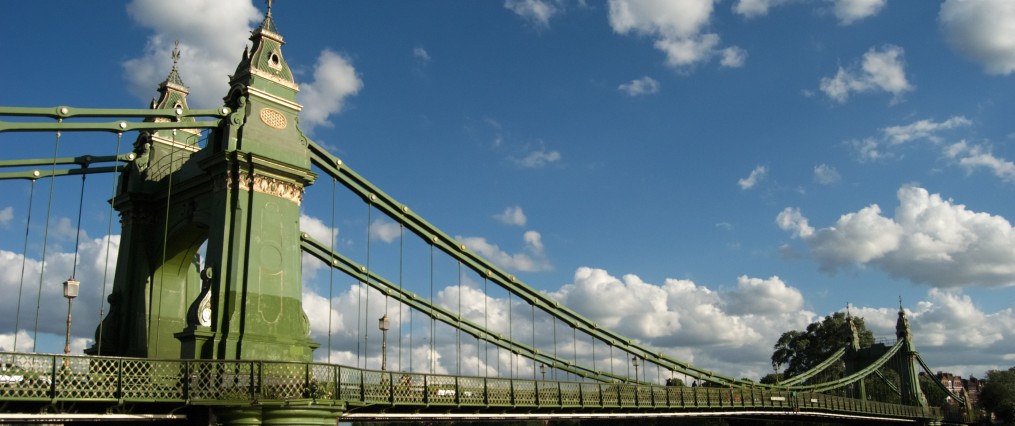The latest missive from the Hammersmith Society includes the following useful update on Hammersmith Bridge from the Society’s Chairman Tom Ryland:
The bridge acts as the visual icon of Hammersmith and the silhouette of one of the towers forms our own logo, for example.
Any of you that have travelled over the bridge over the last few months cannot have failed to notice the problems – either with the decking and surfacing of the carriageway or the queues of single decker buses being marshalled by TfL officials at each end. Discussions between the Council who are responsible for the days to day operation of the bridge and TfL who are responsible for the bus routes using the bridge have been on going for months. Ultimately TfL want to permanently strengthen the bridge to carry double decker buses but there are arguments about how to do this, how long it will take and who picks up the costs.
This bridge was built in 1870 and is Listed Grade 2*. It now carries 20,000 vehicles per day – far more than was ever envisaged. A 7.5tonne temporary weight limit and width restrictions are in place and currently only one single deck bus is allowed on the bridge at any one time. The two authorities now seem to agree that the earliest a scheme of permanent strengthening can commence will be in the second half of next year (2018). This will involve the closure of the bridge for many months. (Visit the Council website – http://www.lbhf.gov.uk – Hot topics – Hammersmith Bridge).
Temporary closure
In the meantime, various temporary measures have to be put in place as a matter of urgency. The bridge will be closed to road traffic from early on 11 February – 20 February 2017 which coincides with most school half term dates. The decking and surface are to be replaced or repaired. The bridge will remain open to pedestrians and cyclists. Most of the existing six bus routes will terminate at each end and passengers will be able to walk across the bridge and rejoin a bus on the opposite side : Route 72 will be diverted via Chiswick Bridge,
Consideration of the colour scheme when re-painting?
Finally we assume that the bridge will be comprehensively repainted after completion of the major works. Would members like to see the so called ‘Harrods green’ retained (which is apparently historically accurate) or should consideration be given to a more playful, elegant scheme as many of us will remember from the days when the GLC was responsible for all the Thames bridges? We would like to open up a debate : Please let us have your thoughts!
